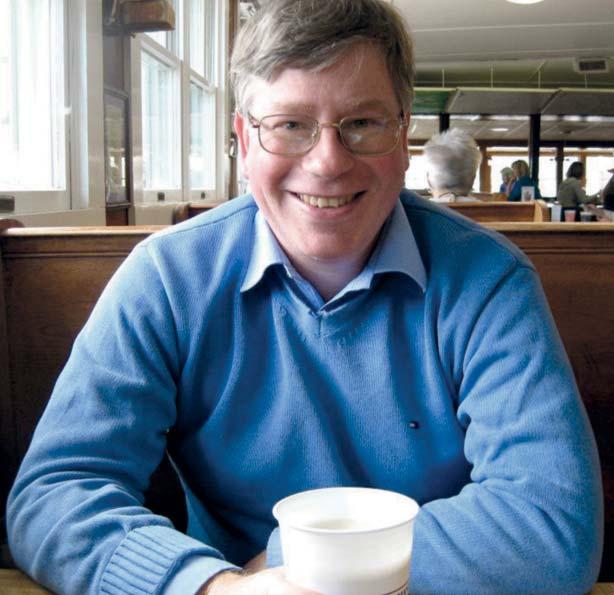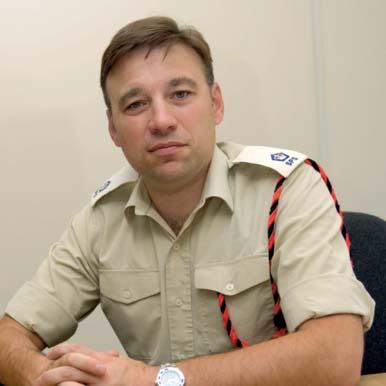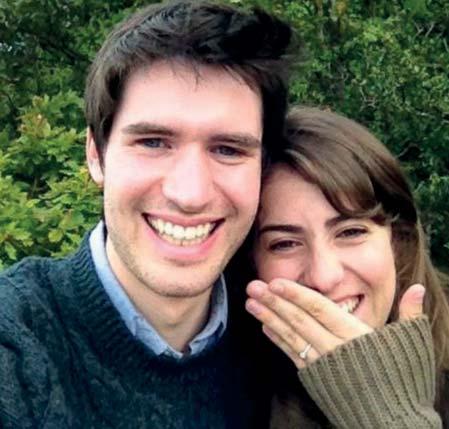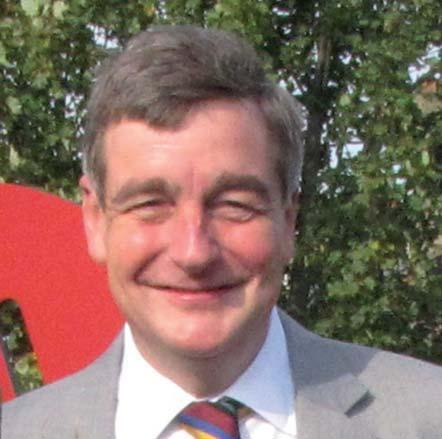
7 minute read
A History of the RGS in Ten People
from ONA 87
A HISTORY OFTHE RGS IN TEN PEOPLE
The search by David Goldwater (51-62) for 10 people who have been most influential in the history of the school continues.
Advertisement
In the 1950s, the bijou Grainger Cinema used to retain popular films for very, very many weeks. ‘The Robe retained for 44th Week!’ was a typical small ad in the Evening Chronicle. Our History of the RGS won’t run for 44 issues, but is a fertile subject and has produced some fascinating follow-up correspondence, which itself could provide future interesting reading. Hawk-eyed Bryan Stevens (44-49) spotted an error in Issue 86: Edward Moises was Hugh Moises’ nephew, not his son. Narrowing our lengthening list of notable RGS personages down to 10 will be a challenge, but one which we will probably focus on this June at RGS Day.
We begin with Thomas Addison (1793-1860), born in Longbenton where his father was a grocer and flour dealer. He graduated in Medicine in 1815 from Edinburgh University. He moved to London where, as a house surgeon at the Lock Hospital, he became engrossed in diseases of the skin, his speciality leading him to describe the changes in pigmentation now known as Addison’s disease. As a pupil at Guy’s Hospital from 1817, within a few years, he had swiftly moved from a licentiateship to Fellow at the Royal College of Physicians. A modest, reserved man, he was ambitious and eventually became sole lecturer at Guy’s, his brilliant reputation attracting large numbers of students. Sadly, he suffered from acute depression, then referred to as melancholia and retired in 1860. His suicide soon after was blamed on overwork. He rests in Lanercost Churchyard and was commemorated at Guy’s by ‘an admirable bust’. In 1975, George Pallister, under whose quiet but dedicated biology instruction many RGS boys of the 1940s and 50s moved onwards to medicine, published a short monogram on Addison.
John Elders by Nick Posner (75-85)

John Elders (I am greatly indebted to John Armstrong for extensive notes from which I prepared this section.)
William Webb-Ellis might spring to mind as the father of the game first amongst most Rugby aficionados. In the case of RGS, however, between 1957 and 1982 and beyond, it is to John Elders that the school owes a huge debt of gratitude. Serving under Headmasters Mitchell, Haden, Cox and Miller, he was appointed ‘to give sport a voice in this academic school’. He taught Maths, organised Prize-giving, panoramic photographs, Founder’s Day and Carol Services, served as Housemaster of Collingwood, Tutor and arranged school camps. As Director of Sport, John wanted every boy to find a sport he could enjoy and continue beyond school. He also took 1st Year Cricket; seeing John taking 1st Year Cricket into the nets, Donald Meakin told him ‘they were reserved for the 1st Xl’. The retort was immediate and characteristic: ‘If the first years don’t get into the nets, there’ll be no 1st Xl in six years’ time’.
John played for Loughborough Colleges, captained Leicester and trialed for England. At school, his clubs were Northern and later Old Novos, playing for Northumberland, North East Counties and the Barbarians. Early in the 1970s, he became England Coach and his most remarkable successes were on short tours with England to South Africa in 1972 (unbeaten there) and New Zealand in 1973 winning both Test Matches. John’s next role was coaching England Schools, whom he took on an unbeaten tour of Australia.
Alister Cox wrote in the foreword: ‘We all owe several debts to John Elders. By his own achievements as player and national coach he has brought reflected glory upon the RGS, and his experience of wider horizons has helped to keep the school game in proper perspective. I have always detected a pleasing lack of fanaticism about the RGS approach – some magnanimity in victory, a philosophical attitude to defeat, and a preference for enjoying the game.’
(John Armstrong comments: ‘I might qualify Alister’s words: sportsmanship certainly, but in his rugby John was nothing if not competitive.’)
In the same club history Tim Duff (51-59) wrote: ‘Top people take the Times, ran the jingle in early 1957. Top schoolboys read an advertisement for a Master to take charge of Rugby Football at the Newcastle Royal Grammar School. We wondered what we would get and in the early days of September in training sessions before term we met John Elders, hair then just tinged with grey, and were very quickly taken with his friendly, direct and positive approach… Looking back as captain… one was conscious of a great deal of constructive support from the touch line during matches and always of encouragement. Doubtless this history and all the other Centenary activities would not have occurred without his drive and enthusiasm… our greatest thanks are for the way he has kept us in touch through him with the RGS… he is still the same man and friend we knew at school.’
John was ultimately approached to take up a teaching post at Downlands College in Queensland, where of course he coached rugby and he and Margaret enjoyed the 10 years there. He brought Downlands over on tour to the UK, which of course included a visit to play the RGS. After returning from Australia to UK in 1992 at the age of 60, John returned part-time to the RGS for five years, retiring in 1997. Countless Old Novos and former staff will wish to send him and Margaret their fondest regards through the pages of our magazine.
Peter Murray Taylor (38-49) is one of the most distinguished alumni in RGS’s near five centuries. At school, he captained the 1st XV from 1946-49, as well as the Newts Swimming Team. He proved to be an accomplished pianist both at school and throughout his life, playing to concert standard. From making his mark on the life of the school, Peter Taylor went on to re-define the role of England’s most senior fulltime judge and changed fundamentally the public’s perception of the judiciary. He was evacuated to Penrith with school, where he met a fellow evacuee, later to be his wife, Irene.
After reading History at Cambridge, he was called to the Bar in 1954, taking Silk at the age of 36. Leading the North Eastern Circuit and chairing the Bar Council, one of his most notable cases was the prosecution and jailing of the corrupt property developer John Poulson in 1974. During that trial, Peter Taylor was known to slip away during the lunch recess to play the piano. At parties and at the Garrick Club he would enjoy accompanying his own string trio. His love of the instrument linked him for many years to the Leeds International Piano Competition and he performed in public together with its chairman, Dame Fanny Waterman.
A High Court Judge from 1980, he was promoted to the Court of Appeal eight years later and was appointed shortly after to chair the enquiry into the Hillsborough Football disaster. It was a good choice as he was not only an accomplished sportsman, but also a long standing supporter of Newcastle’s football and rugby teams. His report led to the introduction of allseater stadiums and it was not until very recently that its tone, blaming the police and ground owners, rather than the fans, was reflected in the conclusions of the Hillsborough Independent Panel which was able to examine documents not available to Peter Taylor.
In 1992 he succeeded Lord Lane as Lord Chief Justice and became Lord Taylor of Gosforth. It was a time of crisis in the criminal justice system. By 1996, when he retired, the miscarriages of justice which had forfeited public confidence were no longer in evidence. He was undoubtedly a moderniser, influencing government policy. Even his very last appearance in the Lords was the controversial initiation of a debate attacking Government policy regarding prison sentences. Struck down prematurely by illness, his greatest sadness had been the prior death of his wife and then, in turn, his inability to play the piano. At his Memorial Service in St Paul’s Cathedral in July 1997, the Hebrew Kaddish Prayer was read by his son Louis Taylor (75-85) and brother Arthur Taylor (33-41), something without precedent. Peter Taylor was fearless and passionate and what his further contribution to the Law might have been is incalculable.
For the next and final part of this History, I’d very much appreciate any personal reminiscences of Ma (Miss) Steven and Jack Wolstenholme. Please write to or email the Development Office (see Contents page for details).
Peter Taylor (38-49) and his brother, Arthur Taylor (33-41) on the balcony overlooking the portrait of Lord Taylor in the School Hall (June 1994).










